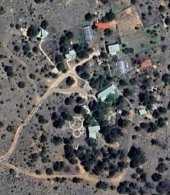D.W.
You have a challenging situation. With that little soil depth, I am going to suggest that you concentrate on building up as opposed to digging down. Hugel mounds are certainly one approach to doing this and there is plenty of information on this site describing how to build a hugel mound. I have a slightly different approach. I still use wood, but in my case I build a frame out of 2x10 lumber (logs work fine too--I actually have both). I fill my frame using wood chips from wood scavenged from my property. I have about 300 feet of fence that is terribly overgrown and needs to be thinned back a couple of feet (since moving here 15 years ago, the fence line has encroached by about 10 feet) and after trimming I chip that material (I rent a chipper) and fill my garden beds with it. Then I inoculate with Wine Cap mushrooms, plant tomatoes (or whatever) in fertile holes and wait. After 6 months to a year, the wood chips are wonderfully broken down and make amazing, highly fertile
compost. I actually don't need to add any nitrogen as the bacteria in the chips add plenty for me. If you are interested, I can help further.
But this is only one way to do things.
If you want to build hugel mounds, then by all means do so. Apparently you have the wood. I guess my question is do you have the soil to fill in around the logs. You could bury the logs as deep as they will go, but from the sounds of things, that will not be very far. Can you scrape together enough earth from around your property to fill in when you need extra soil? If so, then you should be able to build a hugel mound just fine. If not, maybe the raised bed is best.
Another thought for creating soil bedding is to have a straw bale garden. In this case, you line up a bunch of straw bales and treat with fertilizer (urine works great here) and plant in the straw. Assuming all is kept watered, the plants grow extremely well and by the end of the growing season, the straw bales have decayed away to just about nothing but high quality compost. You could use the left over compost as a soil substitute and add it to the logs. I would think this would only help speed up the log decay.
D.W., These are only a couple of ideas. If you like them, maybe you can use them or at least make some practical use of them. If have misjudged the situation, please let me know. Either way, good luck to you and please keep us updated.
Eric

 1
1







 4
4




 3
3





 3
3




 3
3


















 3
3









 2
2










